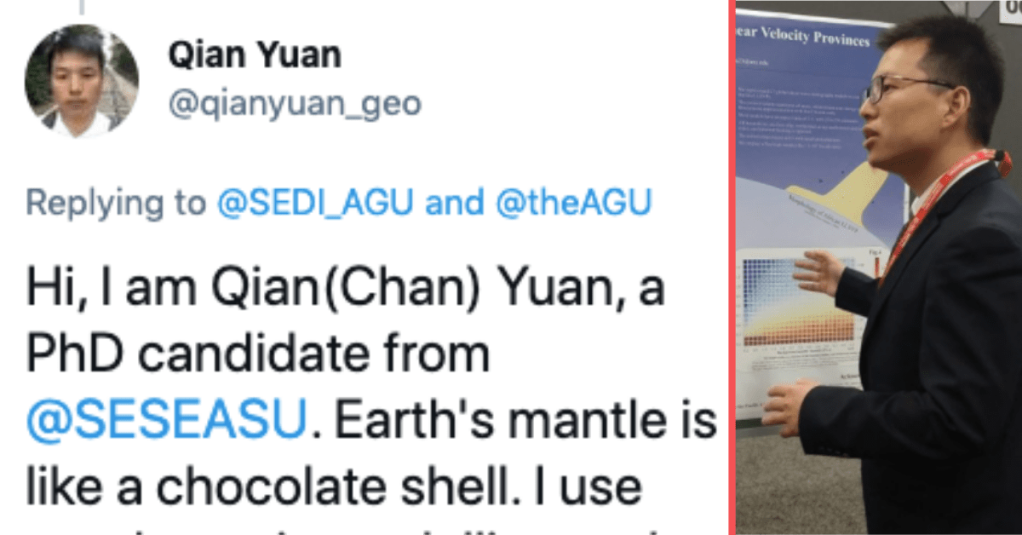Just when you thought you knew how the world works, science throws you something new.
There’s a ton of great research coming out of PhD programs these days–new discoveries and new ideas.
One such researcher is Qian Yuan from the School of Earth and Space Exploration at Arizona State University.
His research suggests that parts of the Earth are not actually Earth at all.
His team’s research was presented at the 52nd Lunar and Planetary Science Conference this past March.
For years it has been widely believed that a proto-planet called Theia helped to form life as we know it.
According to Popular Mechanics:
In 2016, UCLA researchers proposed that Earth could actually be two planets that fused together after colliding: itself and Theia. At the time, scientists said they believe the two planetary masses mixed together uniformly. Now, Qian Yuan of Arizona State University and his colleagues suggest the mysterious dense spots in Earth’s interior are the specific pieces of Theia that are still intact.
Theia is thought to be very similar in size and structure to Mars.
Scientists also believe that the Earth’s Moon may have formed during this impact.
You might remember from science class that the Earth is made up of 3 layers: the crust, the mantle, and the core.
The mantle itself is also made up of layers of varying density, and is at the center of Yuan’s research.
In some cases, there are massive pockets that are more dense, called “Large Low Shear Velocity Provinces” or (LLSVPs).
I honestly don’t understand most of Yuan’s science-related tweets, but he compares the Earth to chocolate, which is always a language I can understand:
Hi, I am Qian(Chan) Yuan, a PhD candidate from @SESEASU. Earth's mantle is like a chocolate shell. I use geodynamic modelling and microanalysis of mantle rocks to explore how the “chocolate” convects and leads to profound geological processes. #AGU20RollCall #AGU20 @theAGU pic.twitter.com/GuPOvVb97g
— Qian Yuan (@qianyuan_geo) December 10, 2020
The team did a lot of math, and they have been able to compare the objects of their study with the mantle on Mars, which can be examined in the form of meteorites that have landed on Earth–over 100 of them.
What the researchers found is that:
“The total mass of the moon, together with the LLSVPs, is almost perfectly matched with [Mars’s] mantle.”
Unlike the original supposition that the two planets fused completely, Yuan’s team believe that the heavier Theia material sank into the deepest part of the Earth’s mantle, closest to the core, and there it stayed, like the gritty dregs at the bottom of a cup of coffee.
Popular Mechanics explains it this way:
How have the dense Theia materials stayed intact for billions of years?
It’s a function of the way Earth’s mantle works, where convection circulates materials that are a certain temperature and density.
The Theia materials are so dense that they sank and never floated back into the convection zone.
Think of this like the stuff that accumulates in a sharp corner that’s hard to reach with the vacuum cleaner.
So now you know. The Earth is like an Easter candy egg with a vacuum cleaner hidden deep inside.
And even though Mars feels very far away, we are all technically walking on a foreign world.
Did Yuan’s research completely blow your mind like it did mine? 🤯 Tell us in the comments.






